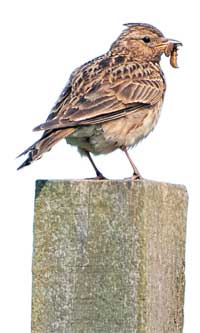South-west farmers reverse farmland bird decline

Farmers across the south west are starting to reverse the steep decline in farmland bird species with the help of an industry partnership launched last year.
The South West Farmland Bird Initiative has brought together farmers and wildlife experts to improve habitat management without damaging profitability.
“Specialist farmland birds have declined by more than 60% since the early 1970s – that is pretty alarming,” said Neil Harris from the Cotwolds Farmland Bird Project.
The most endangered species were lapwing, grey partridge, corn bunting, tree sparrow, yellow wagtail and turtle dove, with linnet, skylark, yellow hammer and reed bunting also at risk.
All had three key requirements to survive and flourish – safe nesting sites, summer invertebrate food and winter seed food – something which all farmers could help to provide.
Focused on four areas – the Cotswolds, north Wessex, south Wiltshire and Dorset – the project had already provided 240 one-to-one site visits, advised on 62,000ha of farmland and helped set up 66 Higher Level Stewardship Scheme agreements.
But, with many Entry Level Scheme agreements coming up for renewal and the drive to meet targets set by the Campaign for the Farmed Environment, now was an ideal time to widen out, said Mr Harris.
And the key to helping farmers meet these targets was through their own agronomists, who could advise on the best land management to improve both profitability and enhance the environment, said Peter Thompson from the Game and Wildlife Conservancy Trust.
“Farmers are keen to do the right thing, but they do need help.”
Changes to the Entry Level Scheme meant many in-field options, like skylark and lapwing plots, were now more manageable and financially viable, he said.
By carefully targeting these habitat sites, and growing seed mixes in a more commercial fashion, farmers could produce exceptional results.
“Treat crops well and they will reward you,” he added.
